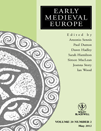
Early Medieval Europe
Scope & Guideline
Celebrating the Diversity of Medieval Heritage
Introduction
Aims and Scopes
- Cultural Exchange and Interaction:
The journal emphasizes the significant cultural exchanges that occurred during the early medieval period, including the interactions between different ethnic groups, religions, and regions, particularly in the context of the Carolingian and Merovingian empires. - Manuscript Studies and Textual Analysis:
There is a consistent focus on the study of early medieval manuscripts, including their production, transmission, and the cultural contexts in which they were created. This includes analysis of legal texts, hagiographies, and liturgical materials. - Socio-Political Structures:
The journal investigates the development of political and social structures in early medieval societies, exploring topics such as governance, legal systems, and the role of the church in shaping societal norms. - Religious Practices and Beliefs:
A core area of interest is the study of religious practices, beliefs, and institutions during the early medieval period, including the role of monasticism, the spread of Christianity, and the interplay between different religious traditions. - Archaeological Perspectives:
The journal incorporates archaeological findings to provide insights into material culture, settlement patterns, and everyday life in early medieval Europe, highlighting the importance of physical evidence in historical research.
Trending and Emerging
- Gender and Queer Studies:
Recent publications increasingly explore gender dynamics and queer identities in early medieval contexts, highlighting the importance of these perspectives in understanding social structures and cultural narratives of the time. - Environmental and Economic Histories:
There is a growing interest in the environmental context of early medieval societies, particularly how economies were shaped by agricultural practices, trade networks, and ecological conditions. - Mobility and Migration:
Research focusing on mobility, migration, and the resulting cultural interactions is gaining traction, particularly in relation to the movement of peoples and ideas across Europe during the early medieval period. - Interdisciplinary Approaches:
The trend towards interdisciplinary research is evident, with scholars drawing on methods from archaeology, anthropology, and literary studies to enrich discussions of early medieval Europe. - Digital Humanities and Textual Analysis:
The incorporation of digital tools and methodologies for textual analysis and manuscript studies is increasingly prevalent, enabling new ways to engage with historical texts and artifacts.
Declining or Waning
- Traditional Military History:
Research focused solely on military history and battles of the early medieval period appears to be waning, with fewer publications concentrating exclusively on warfare without contextualizing it within broader social or cultural frameworks. - Monastic Exclusivity:
The exploration of monastic life as an isolated phenomenon is seeing less prominence, as more studies now integrate the roles of laypeople and secular influences on monastic practices and vice versa. - Static Ethnic Identity Studies:
Earlier research that treated ethnic identities as fixed and unchanging is declining in favor of more dynamic approaches that consider the fluidity of identity in the context of migration and cultural exchange. - Regional History Isolations:
There is a noticeable decline in articles focusing exclusively on isolated regional histories without connecting them to broader European or Mediterranean contexts, signaling a shift towards more integrative historical narratives.
Similar Journals
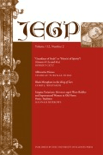
JOURNAL OF ENGLISH AND GERMANIC PHILOLOGY
Innovative Insights into Language and Literary FrameworksJournal of English and Germanic Philology, published by University of Illinois Press, stands as a prestigious forum for scholarly discourse in the fields of linguistics and literary studies. With its ISSN 0363-6941 and an impressive impact factor aligning it within the Q1 and Q2 quartiles in key academic categories, this journal delves into nuanced explorations of both the English and Germanic languages, enriching the understanding of language and its literary frameworks. The journal aims to foster interdisciplinary dialogue, offering cutting-edge research that appeals not only to linguists and literary theorists but also to educators and cultural historians alike. Although the journal is not open access, its contributions are essential for anyone keen on enhancing their knowledge of linguistic phenomena and literary narratives from these influential linguistic traditions. With a commitment to publishing innovative and rigorous scholarship, the Journal of English and Germanic Philology is a vital resource for academics seeking to advance their work in language and literature.

Rossiiskaya Arkheologiya
Bridging Cultures Through Archaeological InsightsRossiiskaya Arkheologiya, published by IZDATELSTVO NAUKA, stands as a leading academic journal in the field of archaeology and history, renowned for its commitment to advancing scholarly discourse and research in these vital humanities disciplines. With an impressive Impact Factor and a distinguished position as a Q1 journal in both archaeology and history for 2023, it ranks among the top tier of academic publications, reinforcing its reputation within the scientific community. The journal features a diverse array of studies focusing on archaeological methodologies, historical analyses, and cultural heritage, fostering collaboration and knowledge exchange among researchers, professionals, and students alike. While access to its rich repository of insights is through a traditional subscription model, the journal’s contribution to the archaeological narrative not only elevates current research practices but also propels future inquiries within the Russian Federation and beyond. Addressing critical questions and dialogues within its scope from 2017 to 2023, Rossiiskaya Arkheologiya serves as an essential resource for anyone dedicated to exploring the complexities of human history through material culture.
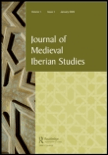
Journal of Medieval Iberian Studies
Fostering Innovative Research in Iberian HistoryThe Journal of Medieval Iberian Studies is a leading academic journal published by Routledge Journals, Taylor & Francis Ltd, dedicated to exploring the diverse and rich tapestry of medieval Iberian history and culture. With its ISSN 1754-6559 and E-ISSN 1754-6567, this journal serves as a vital resource for scholars engaged in the fields of cultural studies and history, attaining a prestigious Q1 ranking in both categories as of 2023. The journal is recognized for its significant contribution to the humanities, featuring peer-reviewed articles that foster innovative research and critical discourse on medieval Iberia from 2010 to 2024. Spanning an array of topics, it encapsulates interdisciplinary approaches to medieval studies, making it an essential publication for researchers, professionals, and students alike who seek to deepen their understanding of this pivotal period in history. Although it currently does not offer open access options, the journal is committed to advancing scholarly discussion and knowledge dissemination within the academic community.
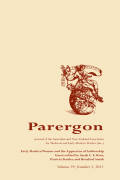
PARERGON
Illuminating the Intersections of History and ArtPARERGON, the esteemed journal published by the Australian and New Zealand Association for Medieval and Early Modern Studies, serves as a vital platform for scholarly discourse within the fields of Arts and Humanities, Cultural Studies, History, Literature and Literary Theory, Religious Studies, and Visual Arts and Performing Arts. Established in 2002, PARERGON aims to contribute significantly to the understanding and appreciation of medieval and early modern studies by providing a forum for innovative research and critical analysis. With a commendable ranking within the Q4 category, it is regarded as a niche journal that, despite its humble rankings, attracts the attention of researchers, professionals, and students seeking avenues for intellectual growth. The journal does not offer Open Access, ensuring a focused readership commitment but may present challenges for broader dissemination. By bridging disciplines and fostering interdisciplinary dialogue, PARERGON plays an important role in enriching the academic landscape of its respective fields, making it a relevant choice for those invested in exploring historical and cultural narratives.
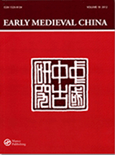
Early Medieval China
Exploring the Depths of Early Medieval ChinaEarly Medieval China is a distinguished journal published by ROUTLEDGE JOURNALS, TAYLOR & FRANCIS LTD, specializing in the intricate study of early medieval China through an interdisciplinary lens that encompasses Anthropology, Cultural Studies, History, Literature and Literary Theory, Philosophy, and Religious Studies. With a commendable impact factor and a prestigious standing in various quartile rankings, such as Q1 in Literature and Literary Theory and Q2 in Cultural Studies and History for 2023, this journal serves as a vital resource for scholars, researchers, and students alike. It aims to promote a deeper understanding of China's early medieval period by publishing innovative research, critical essays, and comprehensive analyses that contribute to the broader discourse on Asian studies and history. By offering a platform for cutting-edge research, Early Medieval China plays an essential role in enriching academic dialogue and fostering further explorations in this historically significant field.

Drevnyaya Rus-Voprosy Medievistiki
Bridging Past and Present through Rigorous ResearchDrevnyaya Rus-Voprosy Medievistiki is a prestigious journal published by INDRIK that focuses on the rich tapestry of medieval studies, particularly centered around the history and culture of Ancient Rus. With its ISSN 2071-9574, this journal aims to contribute significantly to the academic discourse surrounding medieval historiography, archaeology, and cultural studies through original research, comprehensive reviews, and scholarly articles. Although it does not currently operate under an open access model, Drevnyaya Rus remains a vital resource for researchers and students interested in the complexities of medieval civilization. Located in Moscow, Russia, the journal seeks to foster a deeper understanding of Eastern European history and its implications on contemporary society. By providing a platform for rigorous scholarship, it plays a crucial role in expanding the knowledge base within the field of medieval studies, thereby catering to the interests of historians, archaeologists, and cultural theorists alike.

Imago Temporis-Medium Aevum
Advancing Knowledge in Medieval StudiesImago Temporis-Medium Aevum is a distinguished journal published by SPACE POWER & CULTURE- CONSOLIDATED MEDIEVAL STUDIES RESEARCH GROUP, focusing on the rich tapestry of medieval studies within the context of history. Based in the culturally vibrant region of Catalonia, Spain, this journal has established itself as a vital resource for scholars and enthusiasts alike since it adopted an Open Access model in 2007, ensuring that its compelling research is widely accessible. With an impact factor reflected in its Q3 category ranking in the field of History for 2023, and an impressive Scopus rank in the 62nd percentile amongst 1,760 publications, Imago Temporis continues to serve as an incubator for innovative scholarship. The journal's consistent publication history, particularly from 2011 to 2013, 2016 to 2018, and its ongoing commitment through 2024, underscores its dedication to advancing the understanding of the medieval era. Researchers, students, and professionals are encouraged to engage with its unique content, which is poised to challenge traditional perspectives and contribute to the global discourse in medieval studies.
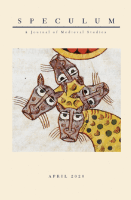
SPECULUM-A JOURNAL OF MEDIEVAL STUDIES
Connecting Disciplines Through Medieval InquirySPECULUM: A Journal of Medieval Studies, published by University of Chicago Press, stands as a premier academic platform within the field of medieval studies. With an impressive legacy dating back to its inception in 1926, this journal has attracted scholarly contributions that explore the rich tapestry of human experience during the medieval period, encompassing areas such as history, literature, philosophy, cultural studies, and the visual and performing arts. It boasts elite rankings—Q1 in History, Literature and Literary Theory, Religious Studies, and Visual Arts and Performing Arts, with a commendable Q2 in Cultural Studies and Philosophy—attesting to its impact and relevance in academia. Although it is not an open-access journal, the rigorous peer-review process and critical scholarship found within its pages provide invaluable insights for researchers, professionals, and students alike. With a substantial Scopus ranking, ID 0038-7134, and E-ISSN 2040-8072, SPECULUM continues to serve as an essential resource for advancing knowledge and understanding of the medieval world, encouraging interdisciplinary dialogue and scholarly interaction.

Dead Sea Discoveries
Advancing Scholarship on the ScrollsDead Sea Discoveries is a premier academic journal dedicated to advancing the study of the historical, archaeological, and textual aspects of the Dead Sea Scrolls and related literature. Published by BRILL, a leading publisher in the humanities, this journal serves as an essential platform for scholars in the fields of History and Religious Studies, holding a commendable Q2 quartile ranking in both categories as of 2023. With an ISSN of 0929-0761 and an E-ISSN of 1568-5179, the journal has been a vital resource since its inception in 1994, continuously enriching scholarly discourse through rigorous peer-reviewed articles, book reviews, and critical essays. Researchers and students alike will find this publication indispensable for contemporary scholarship, effectively bridging historical insights and religious interpretations. The journal is headquartered in Leiden, Netherlands, and although it does not currently offer Open Access options, it remains a crucial repository of cutting-edge research within its field.

Magnificat Cultura i Literatura Medievals
Celebrating the Legacy of Medieval LiteratureMagnificat Cultura i Literatura Medievals, published by UNIV VALENCIA, SERVICIO PUBLICACIONS, is an esteemed academic journal that has been at the forefront of medieval studies since its inception in 2014. With its Open Access model, this journal ensures that cutting-edge research is readily available to scholars and enthusiasts alike, fostering an inclusive academic environment. Based in Spain, it boasts impressive rankings with a Q2 designation in History and a Q1 in Literature and Literary Theory for 2023, indicating its significant contribution to these fields. The journal is indexed by Scopus, achieving top-tier rankings in both Literature and History, and is recognized in the 87th and 72nd percentiles of their respective categories. With a focus on the complexities of medieval culture and literature, Magnificat serves as a vital resource for researchers, professionals, and students dedicated to exploring the rich tapestry of medieval scholarship.